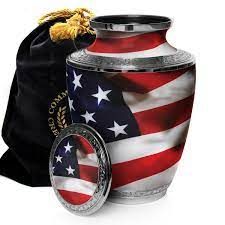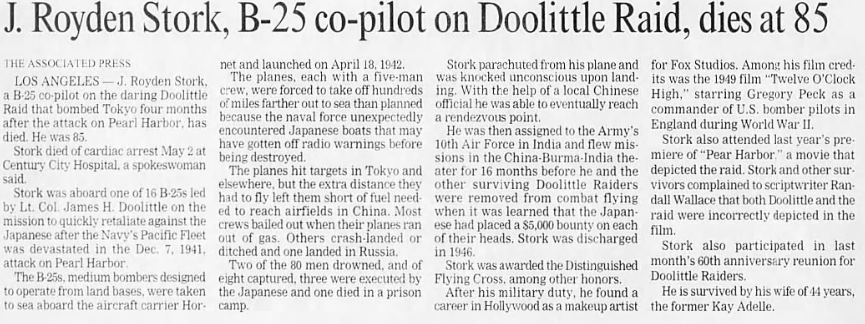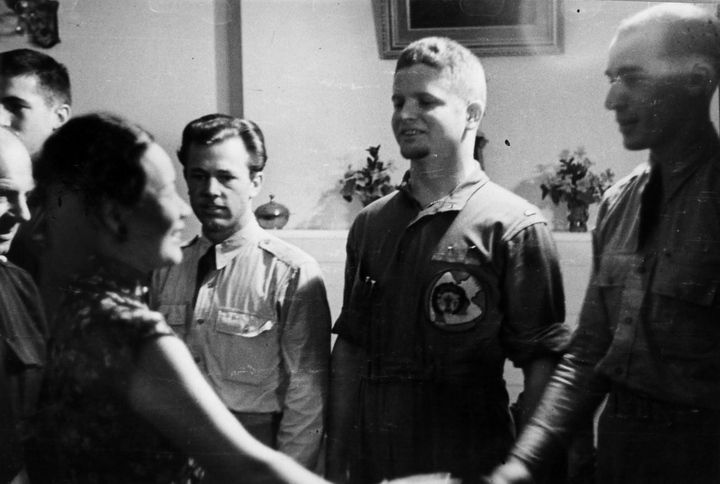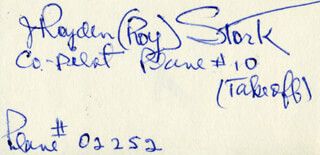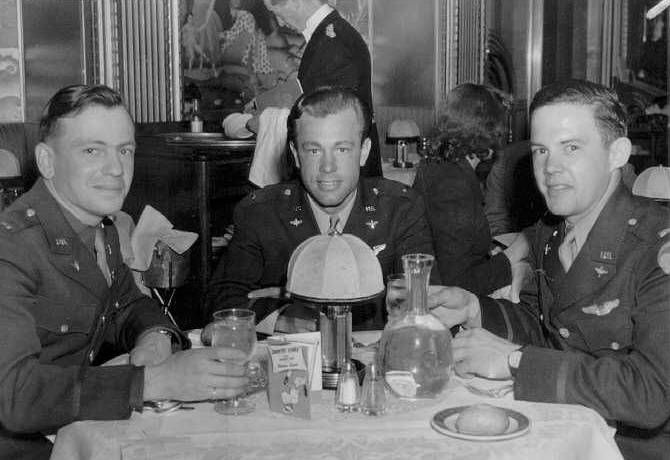Lieutenant J. Royden Stork
- First name: | J. |
- Middle name: | Royden |
- Last name: | Stork |
- Nickname: | Roy/Jay |
- Rank Doolittle raid: | Lieutenant |
- Last rank: | Captain |
- Service number: | 0-421345 |
- Date of birth: | 11 December 1916 |
- Place of birth: | Frost, Minnesota |
- Date of death: | 02 May 2002 |
- Place of death: | Los Angeles, California |
- Place of the cemetery: | Cremation |
- Name of the cemetery: | Ashes scattered in his favourite garden |

Additional info
J. Royden Stork was born 11 December 1916, in Frost, Minnesota. Not much is known about J. Rouden Stork's youth. I was not able to find ou who is parents were.
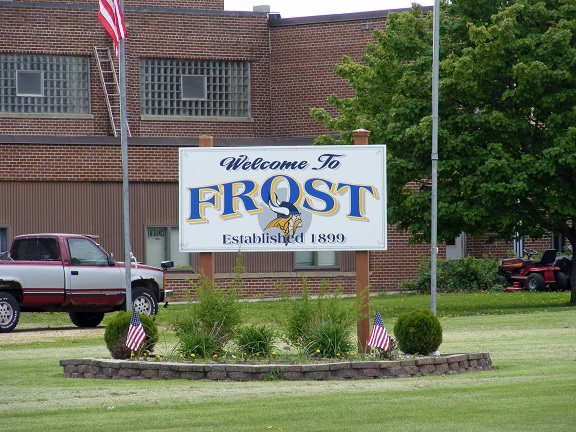
He grew up in San Diego, California were he left San Diego High School in 1933. He went for about three years (untill the war broke out) to the State College of San Diego.

San Diego High School
He joined the Army Air Force o, 25 November 1940. He completed advanced flight training the following April, a year before he found himself aboard the Hornet with his destination unknown (Doolittle raid)
J. Royden Stork was the co-pilot of Crew 10. "We (Crew 10 - plane ten) took off from the carrier USS Hornet at approximately 09:05 o'clock ship time ( -10 zone) on 18 April 1942 and estimate that we were about 5 minutes behind Lieutenant Watson who took off just ahead of us.
We were slightly delayed due to continued miss-firing of the right engine which finally cleared and functioned satisfactorily. We had no difficulty in getting into the air from the carrier. We circled the carrier once and flew over it parallel to its course which We new and set my gyro compass on the known course and set out for Tokyo at a general course of 270 degrees true. We sighted the Inubo Zaki point directly on course ahead of us at about 13:20 ship time.
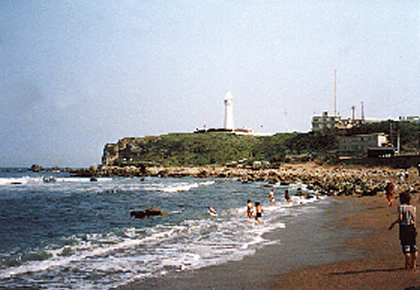
Inubo Saki
That 10th plane, piloted by Lt. Richard O. Joyce with Lieutenant Stork as co-pilot, bombed a steel works and factory complex in Tokyo while encountering Japanese fighters and antiaircraft fire that damaged the rear portion of its fuselage and a wing tip.
Flying at tree-top level, Stork’s plane correctly bombed its assigned chemical plant and flew on until, like the others, it ran out of gas over occupied China. All five crewmen in Lieutenant Stork's plane parachuted safely above China after bombing Japan.
In an interview with The Los Angeles Times soon after the raid, Lieutenant Stork recalling bailing out with candy bars and cigarettes stuffed into his pockets. ''Those bars were flung in every direction, my parachute gave such a flip,'' he said.
I couldn’t see anything in the dark so I was in a completely relaxed condition when I hit the ground. Otherwise I might have been hurt. I must have been knocked unconscious as I don’t remember anything until I found myself lying against a tree. I lay in the rain until morning before starting out.”
With the help of a Chinese official, Lieutenant Stork made it to a rendezvous point in China four days later.
The downed co-pilot walked for a day until he was befriended by a local Chinese magistrate who helped him get to the pre-assigned rendezvous point an additional three days away.
Stationed afterward in India with the Army’s 10th Air Force, Stork flew missions over Japanese occupied territory in the China-Burma-India theater for 16 months. Finally some B-24’s came in and I ended up in a B-24 outfit flying over Rangoon and Thailand. 16 missions and then the Air Force Command in New Delhi sent out a wire to all remaining ‘Raiders’ that were in China or India and relieved us of flying combat because the Japs had a $5000,00 reward on our heads.

Stork left active duty on 22 January 1946.
Stork, who not only survived the raid but the rest of the war and after the war, Stork made his career in Hollywood as a makeup artist for Fox Studios. Among his credits were such feature films as the 1949 “Twelve O’Clock High” starring Gregory Peck commanding American pilots in England during the war.
During 1949 he met Kay Adelle, his later wife, she was a dancer. He married Kay during 1957 in California. The couple had no children.
Throughout his Hollywood career--which also included work on such feature films as “For Heaven’s Sake” in 1950 and “Gargoyles” in 1972 and such television series as “The Beverly Hillbillies”--Stork continued to speak out for the reality of World War II heroes and events.

After that this job offer came I got a good boost from a cousin of a kid I went to flying school with, who was a make-up artist. We established our friendship prior to the war when we went in to take our physical examination and his cousin was a make-up artist. .I would meet Jimmy Stewart at times and a lot of the old movie people – I liked them but the only person I did not like was Orson Welles – he was a big slob and a pain in the butt – I had to work with him too – but I met a lot of nice people – the old school, the real actors and stars – now they are all just television bums.”
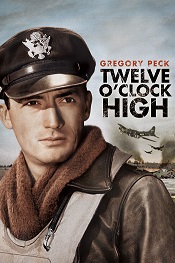
J Royden Stork died on 2 May 2002 in the Century City Hospital in Los Angeles of a heart attack he had the week before. He was cremated and his ashes were scattered in his favourite garden
“No, I’m not a hero. I just did the best I possibly could. And I was lucky to get through it ...” - J. Royden Stork.
If someone has more info and pictures on J. Royden Stork's profile, please contact me at:
If you are related to or have known this person and you have information to share on this page, you are always welcome to contact the webmaster at
The Heroes of Doolittle's raid on Japan in april 1942
by Mr. Geert Rottiers
The book will be available soon.

